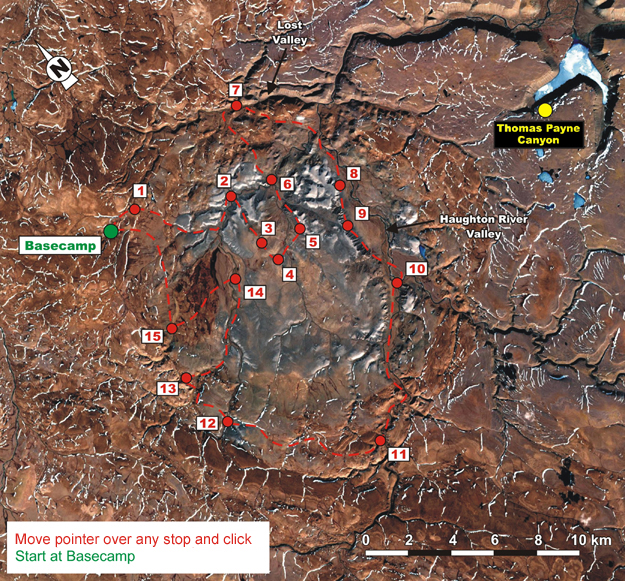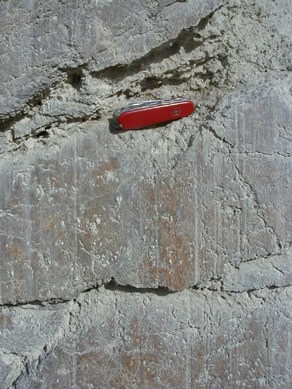
Explorer’s Guide to Impact Craters
Haughton Crater Tour
- Getting to Haughton Crater
- Virtual Tour of Haughton Crater
- Basecamp
- Thomas Payne Canyon
- Haughton – Stop 1
- Haughton – Stop 2
- Haughton – Stop 3
- Haughton – Stop 4
- Haughton – Stop 5
- Haughton – Stop 6
- Haughton – Stop 7
- Haughton – Stop 8
- Haughton – Stop 9
- Haughton – Stop 10
- Haughton – Stop 11
- Haughton – Stop 12
- Haughton – Stop 13
- Haughton – Stop 14
- Haughton – Stop 15
Stop 7 at Haughton

A fault plane along the “Lost Valley” wall
Photo: B. Clancy Scale: Height of person is approximately 1.5-2 meters
The smooth, vertical rock face on which geologist Gordon Osinski is leaning on is called a fault plane. This is a site where blocks of rock on either side of a fault have slid past one other. In this case, the rocks behind Gordon have stayed in the same position, whereas the rocks that should be where Gordon is standing have slid and dropped by as much as 400 meters!

The fault plane surface in detail
Photo: G. Osinski, University of Western Ontario Scale: Length of Swiss Army knife is approximately 8-10 centimeters
Closer inspection of the fault plane reveals vertical grooves on the surface. These are called slickenside lineations and they tell us how the two blocks of rock slid past each other. In this case, the blocks moved vertically (up or down) with respect to one other. For a diagram explaining the different types of faults, click here.
